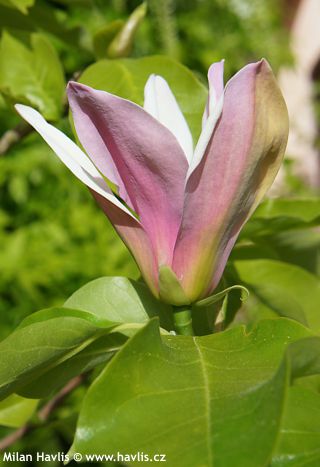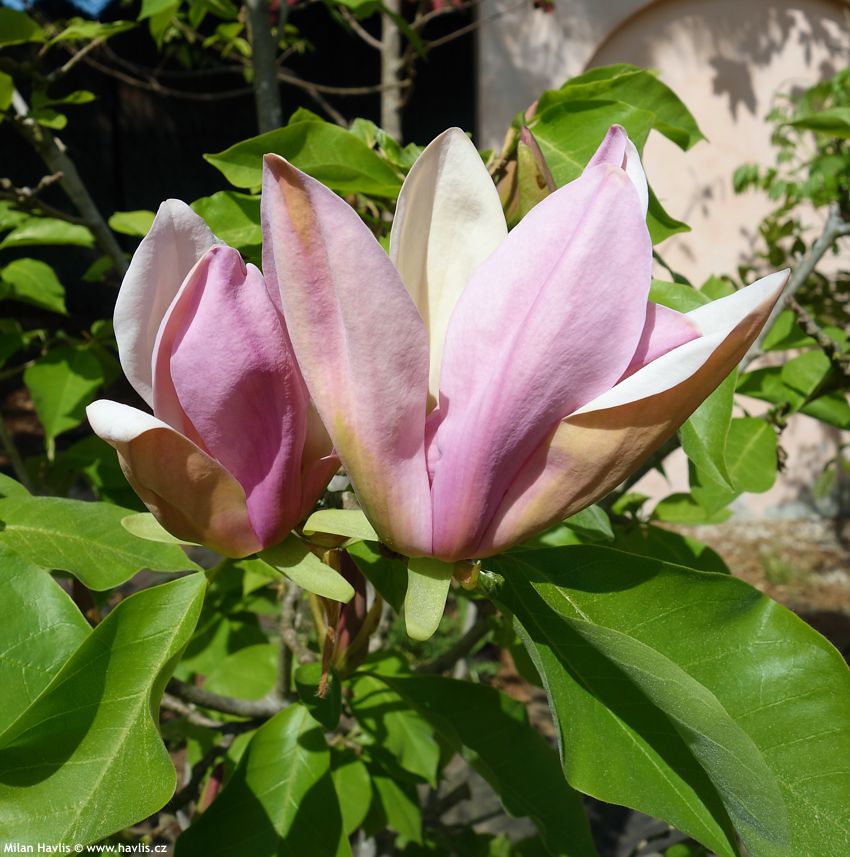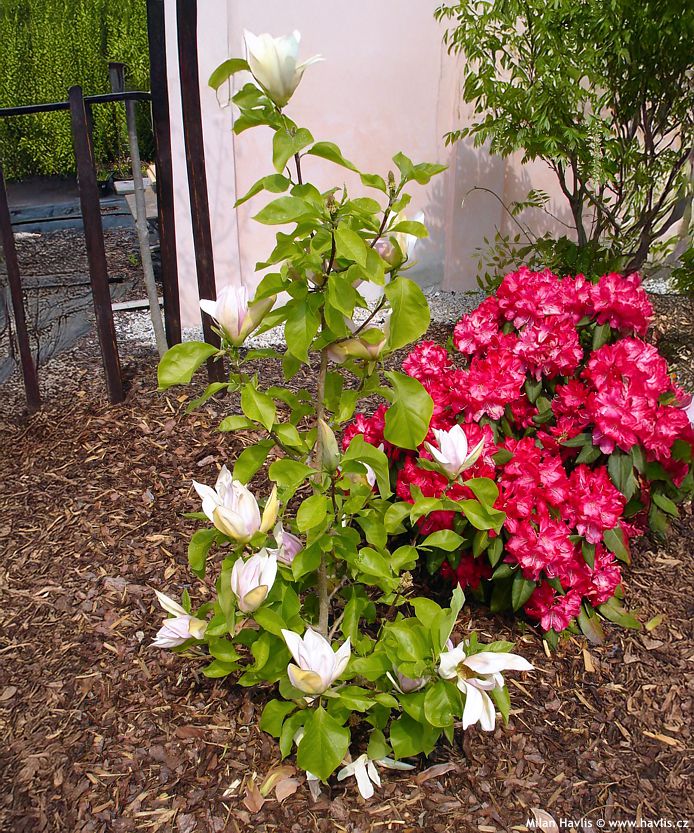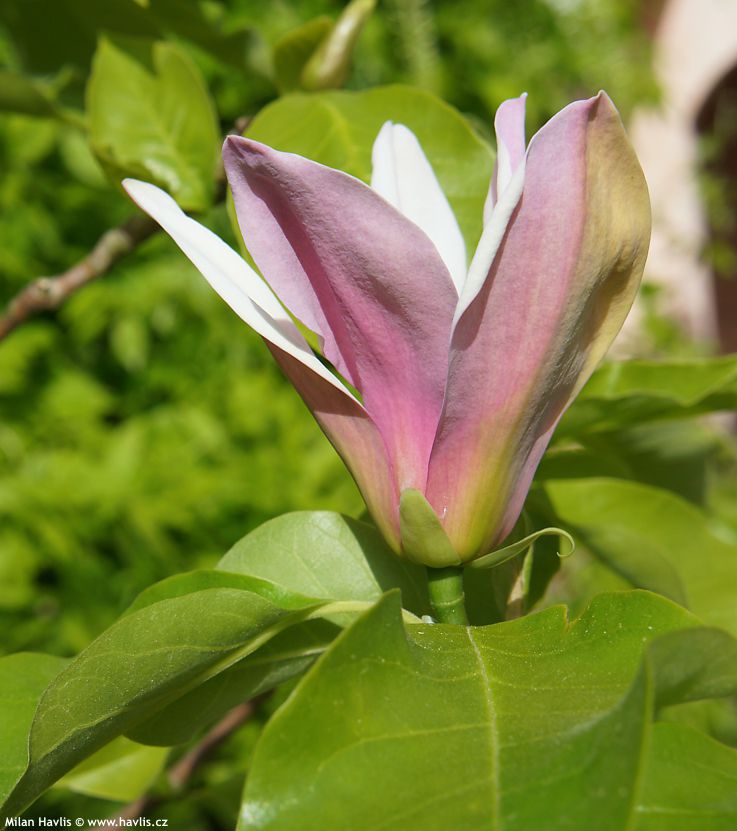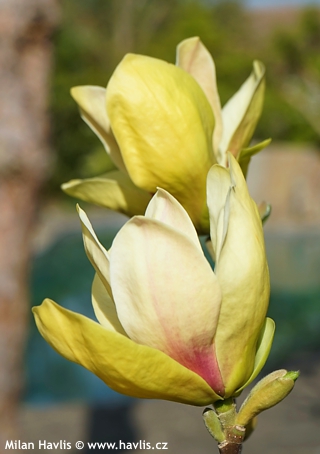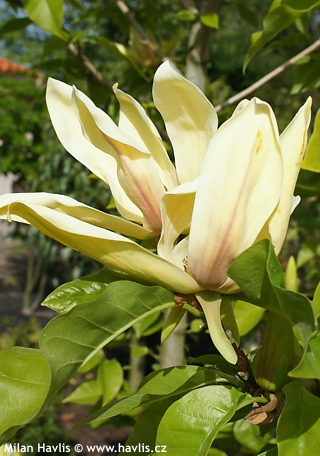Magnolia x brooklynensis 'WOODSMAN' magnolia


Magnolia
The program for breeding yellow-flowered magnolias at the Brooklyn Botanic Garden in New York City began in 1953 and, by its conclusion in 1991, had produced eight fascinating hybrids that continue to grace the gardens of temperate zones around the world. You might even have one of them in your garden without knowing it. Those are: Evamaria, Elizabeth, Yellow Bird, Hattie Carthan, Marillyn, Lois, Judy Zuk, and Black Beauty. The breeders at BBG were the first to use the cucumber magnolia (M. acuminata) with greenish-yellow flowers to achieve the so-desired bright yellow colour, while the second parent was mostly M. liliiflora. Interestingly, some of the resulting varieties are not yellow at all, but you will agree that they were worth preserving.It belongs to the group of Brooklyn hybrids, although it was bred by J. C. McDaniel from Illinois. It is a cross between M. acuminata 'Klassen' and M. liliiflora 'O’Neill' and it was registered in 1974. Still today, it is a sought-after gem for its unique flower colour. On the outside, they are pastel rosy pink, and the outer petals are up to 80% covered with a sandy beige colour that transitions to green closer to the calyx. Inside, they are almost white and have a peculiar fragrance. They are firm, quite large, and their shape is somewhere between a tulip and a lily. Same as money other flowering shrubs, Woodsman magnolia, too, needs a few years to establish and to deepen its flower colour – young plants usually have much paler flowers.
Since Woodsman is a late variety, it blooms simultaneously with the leaves and almost always avoids late frosts. The deciduous leaves are large, firm, medium green, and broadly oval to ovate. The plant grows rather slowly into an upright and dense shrub and is very floriferous. Its mature height of around 4 meters can be expected in about 30-40 years and blooms from young age.
Magnolias are not supposed to be pruned. You can prune old shrubs if ill, or trim them to shape or to reduce size, or make an elementary cut to young plants of unsightly or unhealthy appearance. Do this as soon as possible after flowering to secure setting of flower buds for the following year. Be aware that each magnolia can respond differently to pruning.
Deciduous magnolias are quite easy plants. All they need is light, well-drained, acidic soil with equal moisture throughout the year. Once established they can do with occasional drought but will not look as nice as the ones with regular watering. Just pay attention to how you plant your magnolia. First, find it a spot where it will live forever and ever. It does not like transplanting. And as it makes shallow roots reaching well over its spread, stay away from disturbing the roots by digging or messing about around it. Just cover the soil with bark mulch and do not plant anything else near it after say the second year after planting onwards. You could damage the important top roots that absorb maximum moisture and nutrients from the soil. Also avoid planting magnolia too deep. Thus, you could be digging it a grave. Hardy to abt. -29 °C (USDA zone 5).
Last update 14-01-2025
Goods are shipped all over Europe. For Russia and U.K. and for further details please read about SHIPPING OPTIONS HERE.
Are you interested in a serious discount for orders NOV-FEB? Check your options here.
THE PRICES INCLUDE VAT of 15%. For quick conversion you can use 1 CZK = approx. 0.04 EUR
- STANDARD QUALITY - Plants of this group are 1st class quality with number of branches and overall density adequate to their size and age, considering they were container grown.
- DE LUXE QUALITY - This label guarantees a luxurious quality of manually selected plants that, compared to their height and age, are exceptionally dense and beautiful.
- EXTRA - These plants are usually mature and bigger specimens with exceptional overall appearance.
- STANDARD (as described in the plant form) means a tree with a trunk of 190-210 cm and a crown at the top, unless specified differently. The commercial size for trees is their girth measured in the height of 1m from ground.
- HOBBY - These plants are of the same quality as our standard-quality plants but younger and therefore cheaper.
- SHRUB - a woody plant with branches growing bushy from the ground level.
- HALF-STANDARD or MINI-STANDARD - a small tree with shorter trunk, its size is usually specified.
- FEATHERED - These are trees with branches growing already from the base of the trunk and up along the stem.
- GRASSES and PERENNIALS - Sizes given usually read the diameter of the pot or the clump, as specified.












